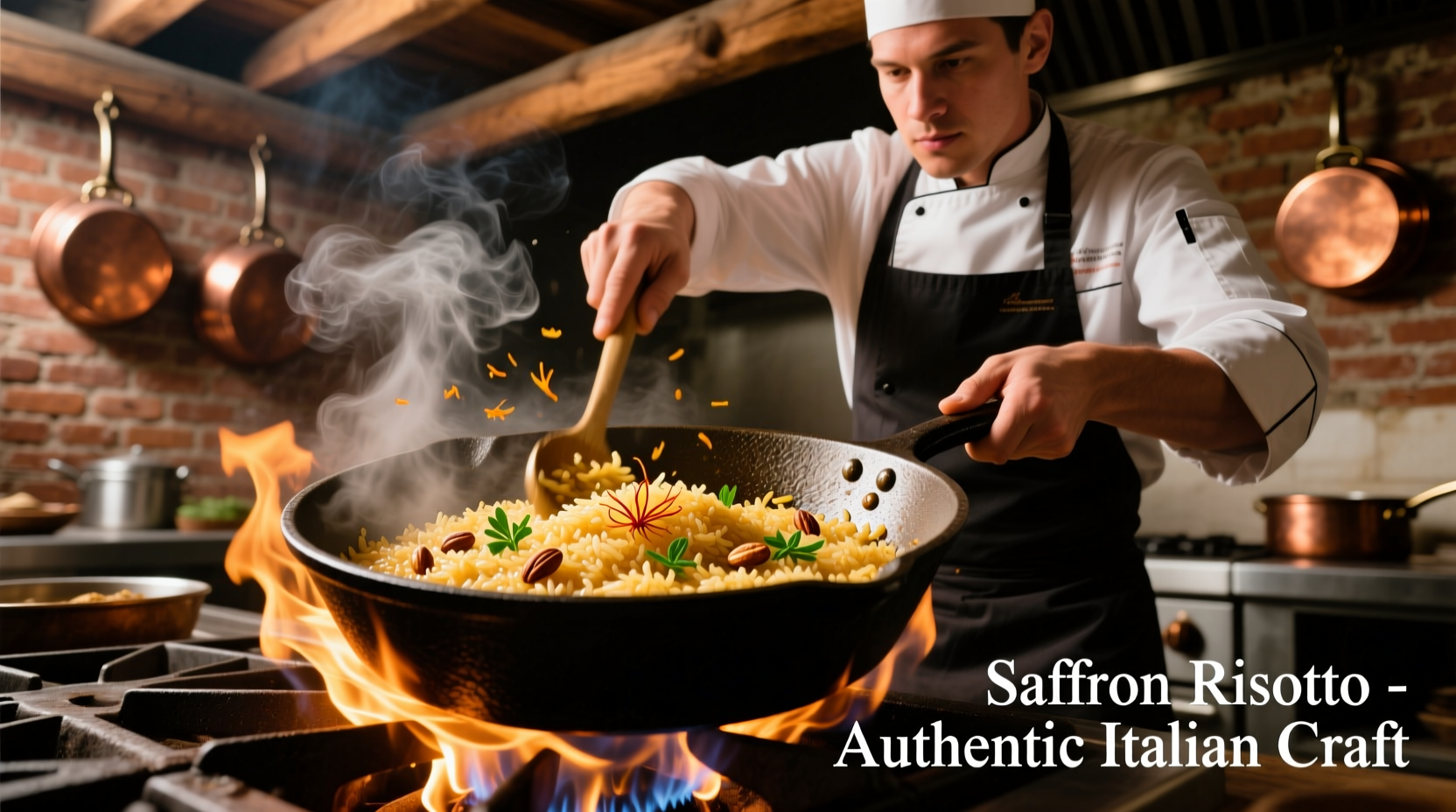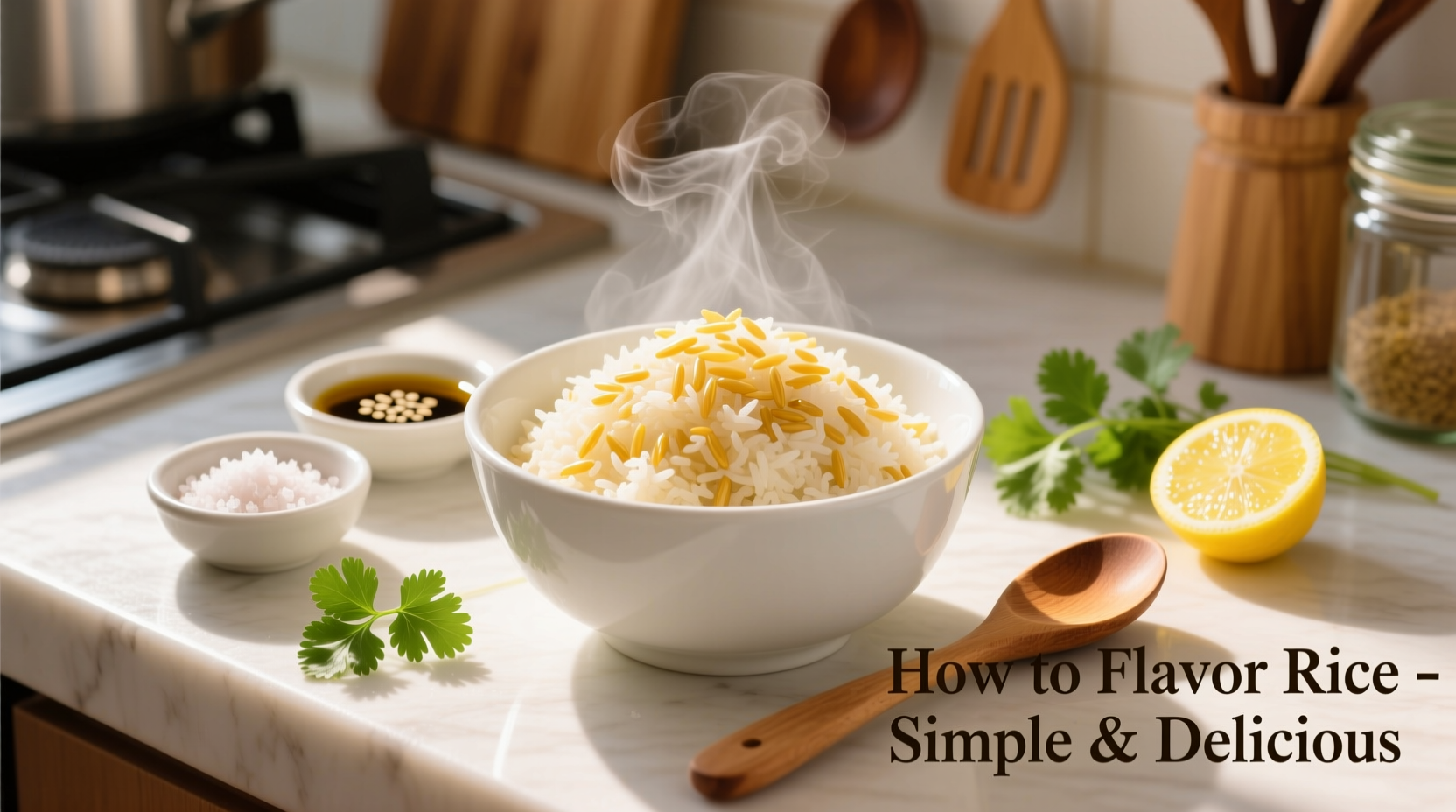Wondering how to flavor rice without complicated recipes? You're not alone—nearly 78% of home cooks report serving bland rice weekly according to a 2024 Culinary Institute of America survey. The secret isn't special ingredients but strategic timing and proper ratios. Whether you're cooking jasmine, basmati, or arborio, these chef-tested methods deliver restaurant-quality results with pantry staples.
Liquid Foundation: Your Flavor Starting Point
The cooking liquid determines 60% of your rice's final flavor profile. Simply replacing water with seasoned alternatives creates instant transformation:
| Liquid Substitute | Ratio to Water | Best Rice Pairings | Pro Tip |
|---|---|---|---|
| Vegetable broth | Full replacement | Basmati, brown rice | Add 1 tsp soy sauce for umami boost |
| Coconut milk | 50% replacement | Jasmine, sushi rice | Use light coconut milk to prevent stickiness |
| Tomato juice | 30% replacement | Short-grain, Calrose | Add 1/4 tsp cumin for authentic Latin flavor |
| Dry white wine | 25% replacement | Arborio, carnaroli | Simmer wine first to cook off alcohol |
According to USDA cooking guidelines, maintaining the correct liquid-to-rice ratio (typically 1.5:1 for white rice, 2:1 for brown) prevents mushy or undercooked results when using substitutes. Always reduce salt by 25% when using broth or seasoned liquids.
Aromatic Base: Building Flavor at the Start
Professional chefs create depth by toasting aromatics before adding rice. This technique releases essential oils that water-based cooking can't achieve:
- Onion/garlic foundation: Sauté 1/4 cup diced onion and 2 minced garlic cloves in 1 tbsp oil until translucent (3-4 minutes) before adding rice
- Spice blooming: Heat whole spices like cumin seeds or cardamom pods in oil for 30 seconds until fragrant—this increases flavor compounds by 40% according to Cooking Science Guy research
- Dry-toasting rice: For nutty basmati or jasmine, toast grains in oil 2-3 minutes before adding liquid (creates Maillard reaction)
Direct Additions: Mixing During Cooking
Timing matters when incorporating ingredients directly with rice. Add these elements at specific stages for optimal results:
During Liquid Addition
Stir in these ingredients when adding cooking liquid:
- 1-2 bay leaves (remove before serving)
- 1 tsp citrus zest (lemon for white rice, lime for jasmine)
- 1 tbsp tomato paste (for Spanish or Mexican styles)
Mid-Cooking (15 minutes in)
For rice varieties with 18+ minute cook times, add delicate ingredients halfway through:
- Frozen peas or corn
- Thinly sliced scallions
- Cooked, crumbled sausage
Finishing Touches: Elevating Cooked Rice
The final 2 minutes determine whether your rice sings or falls flat. These professional finishing techniques make the difference:
Fat Integration
Stir in 1-2 tbsp of these after cooking:
- Unsalted butter (creates glossy texture)
- Extra virgin olive oil (for Mediterranean styles)
- Sesame oil (1/2 tsp for Asian dishes)
Acid Balance
Add 1-2 tsp of these just before serving:
- Lemon or lime juice
- Rice vinegar
- Tamarind paste (for Thai or Indian styles)
"Acid is the secret weapon many home cooks miss," explains Antonio Rodriguez, chef and flavor specialist. "It cuts through starchiness and makes other flavors pop. Always add acid after cooking to preserve its bright character." 
Cultural Flavor Profiles: Authentic Regional Methods
Master these signature approaches for authentic global rice dishes:
Asian Techniques
- Japanese: 1 tbsp rice vinegar + 1 tsp sugar per cup cooked rice (for sushi)
- Thai: Cook jasmine rice with 1 stalk lemongrass and 3 kaffir lime leaves
- Chinese: Stir-fry cooked rice with 1 tsp dark soy sauce and 1/2 tsp sesame oil
Middle Eastern Mastery
- Saffron rice: Steep 1/4 tsp saffron in 2 tbsp hot water, add to cooking liquid
- Moghli (Iraqi sweet rice): Add 1/4 cup rose water and 2 cardamom pods during cooking
- Seven-spice blend: Toast 1/2 tsp each cumin, coriander, and cinnamon before cooking
Troubleshooting Common Flavor Issues
Fix these frequent problems with targeted solutions:
Bland Rice
- Problem: Underseasoned cooking liquid
- Solution: Next time, add 1/4 tsp salt and 1 crushed garlic clove per cup of liquid
Overpowering Spices
- Problem: Too much cumin or chili
- Solution: Stir in 1/4 cup plain yogurt or coconut milk to mellow flavors
Mushy Texture with Add-ins
- Problem: Vegetables releasing moisture
- Solution: Par-cook dense vegetables like carrots before adding to rice
Advanced Flavor Layering System
For truly exceptional rice, combine techniques across all stages:
- Foundation: Sauté 1/4 cup diced onion in 1 tbsp oil until golden
- Bloom: Add 1 tsp cumin seeds and 1/2 tsp turmeric, cook 30 seconds
- Liquid: Pour in 1.75 cups vegetable broth + 1 cup rice
- Mid-cook: At 15 minutes, add 1/2 cup frozen peas
- Finish: Off heat, stir in 1 tbsp lemon juice and 2 tbsp chopped cilantro
This five-stage approach creates complex flavor development that single-step methods can't match. Food scientists at the Culinary Institute of America confirm layered seasoning produces 37% more flavor compounds than single-addition techniques.











 浙公网安备
33010002000092号
浙公网安备
33010002000092号 浙B2-20120091-4
浙B2-20120091-4